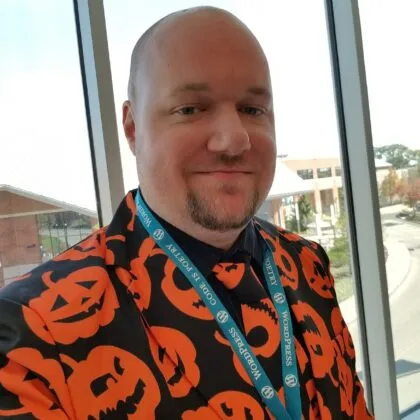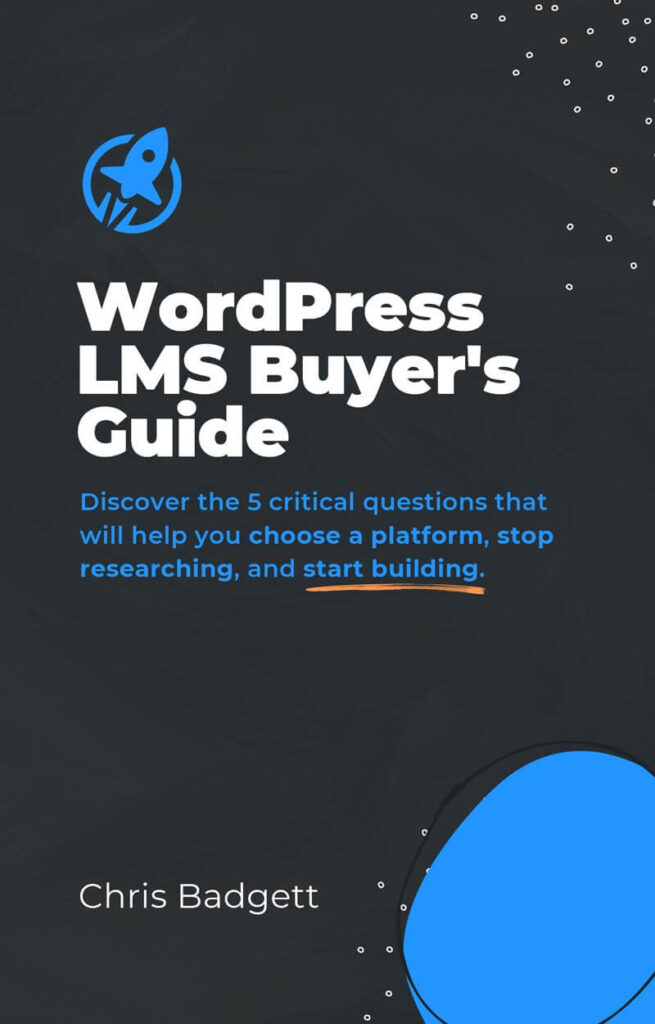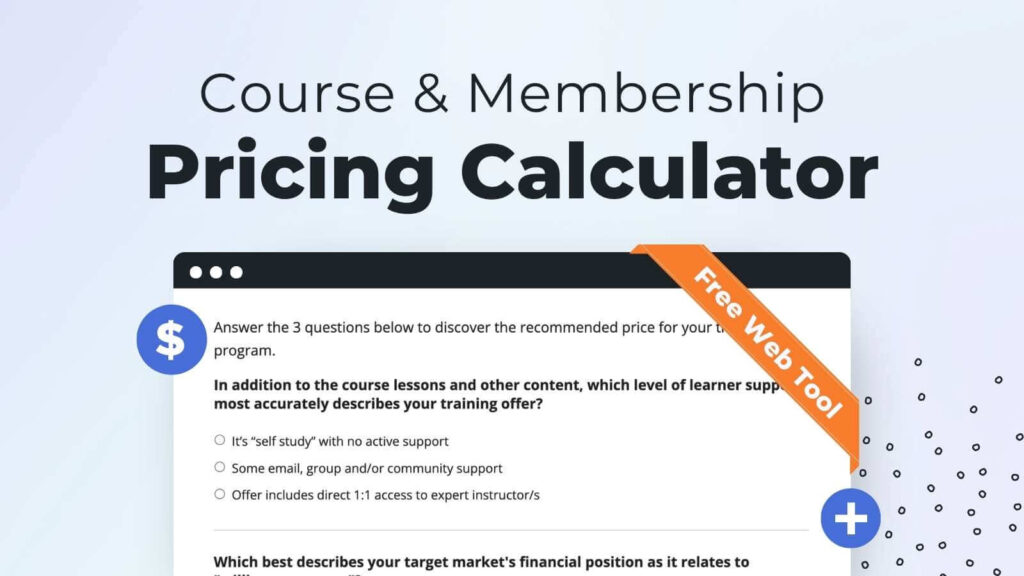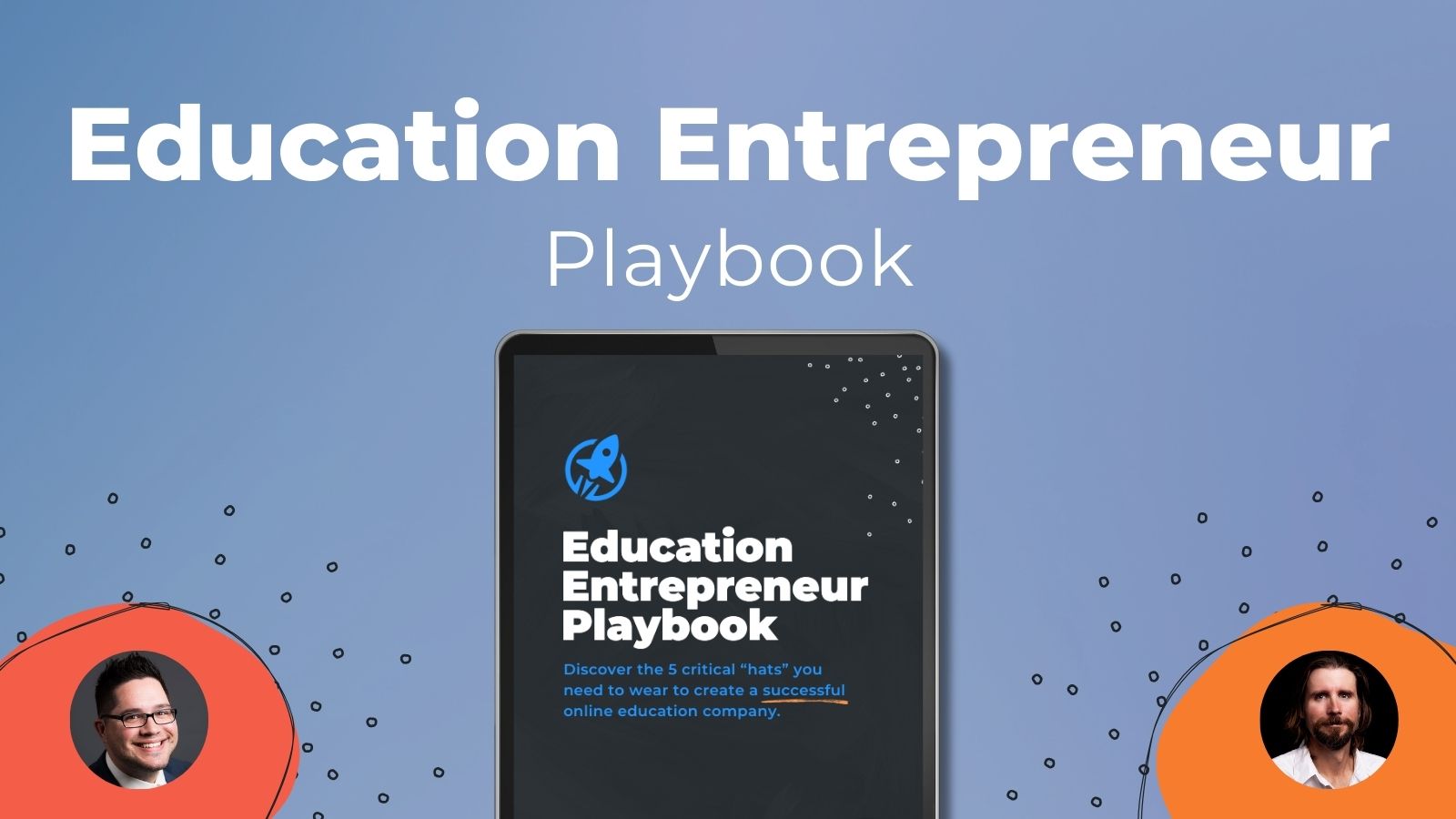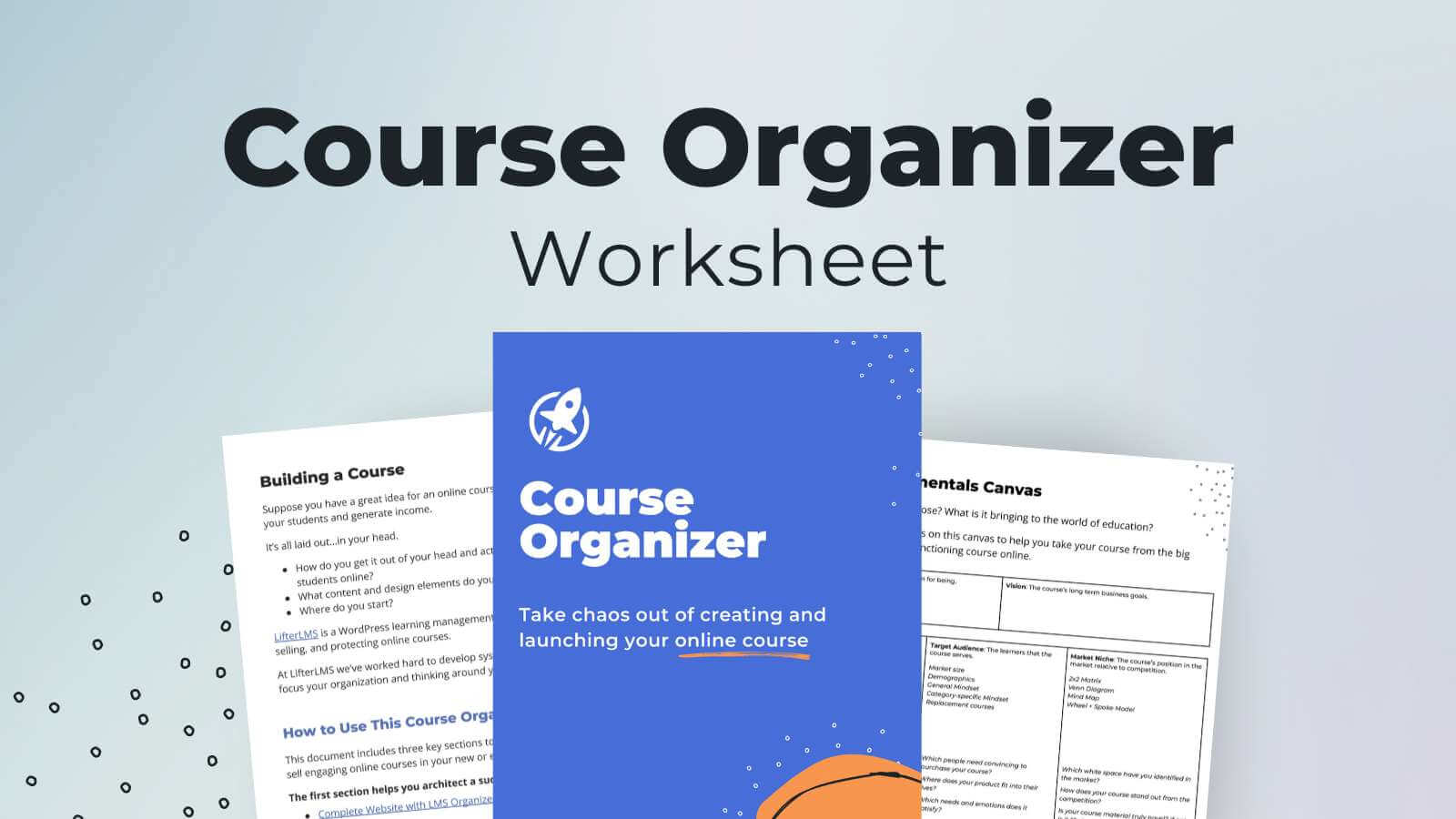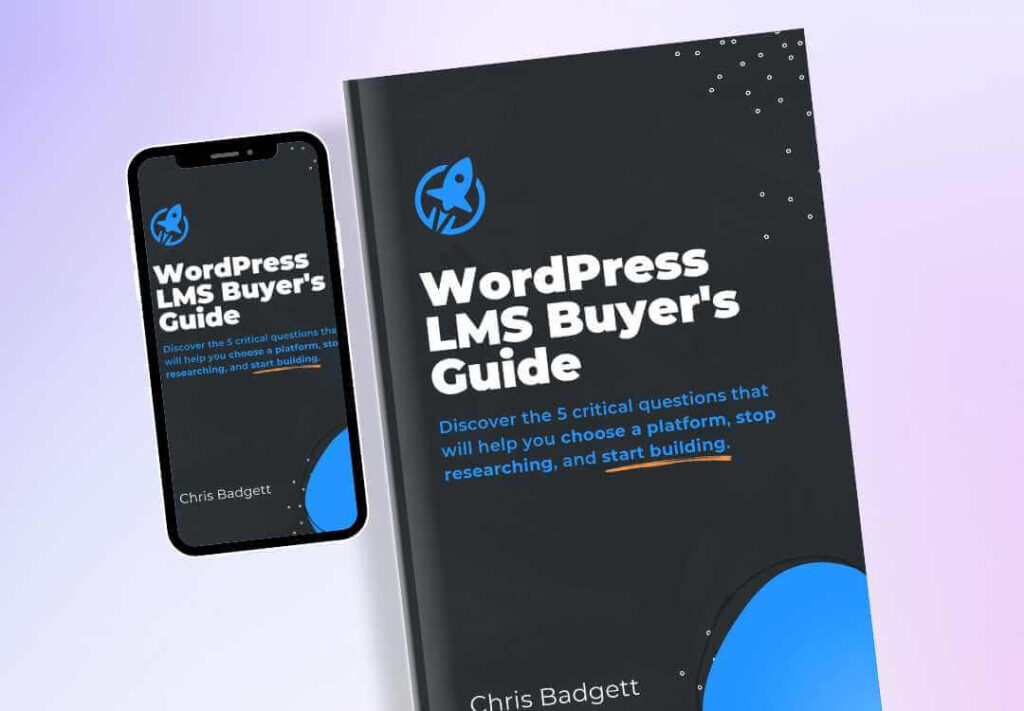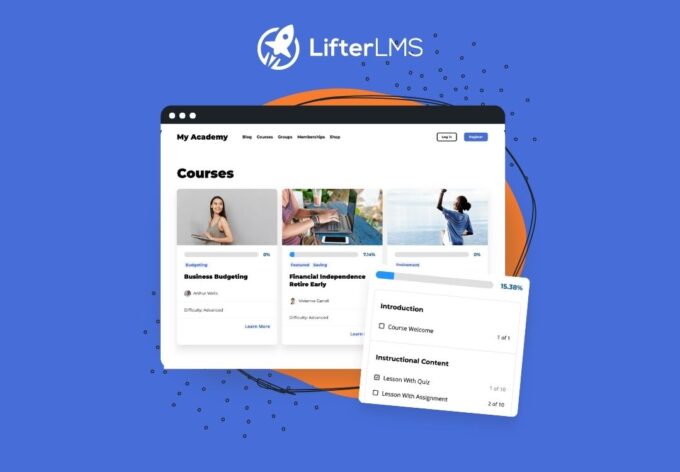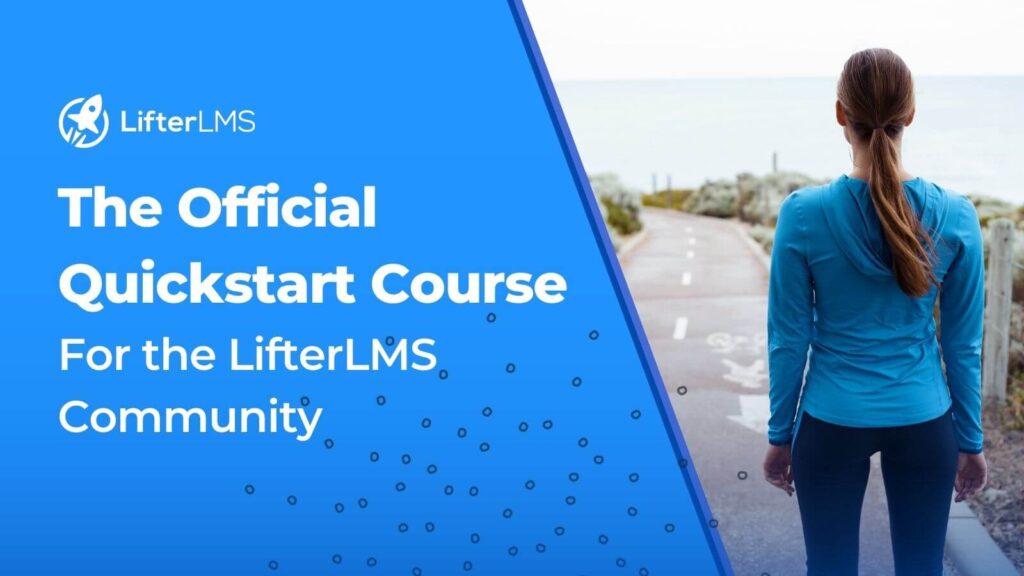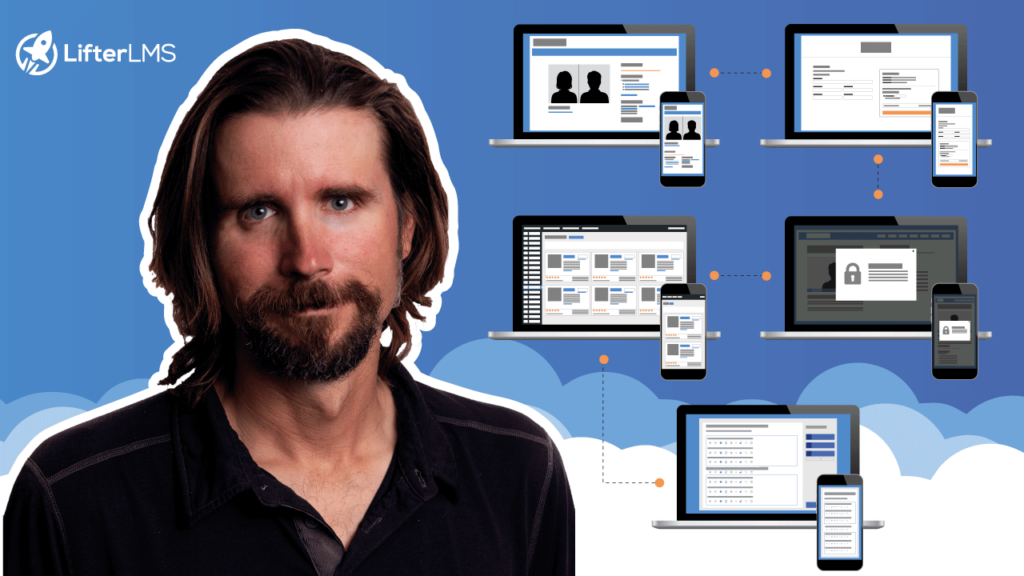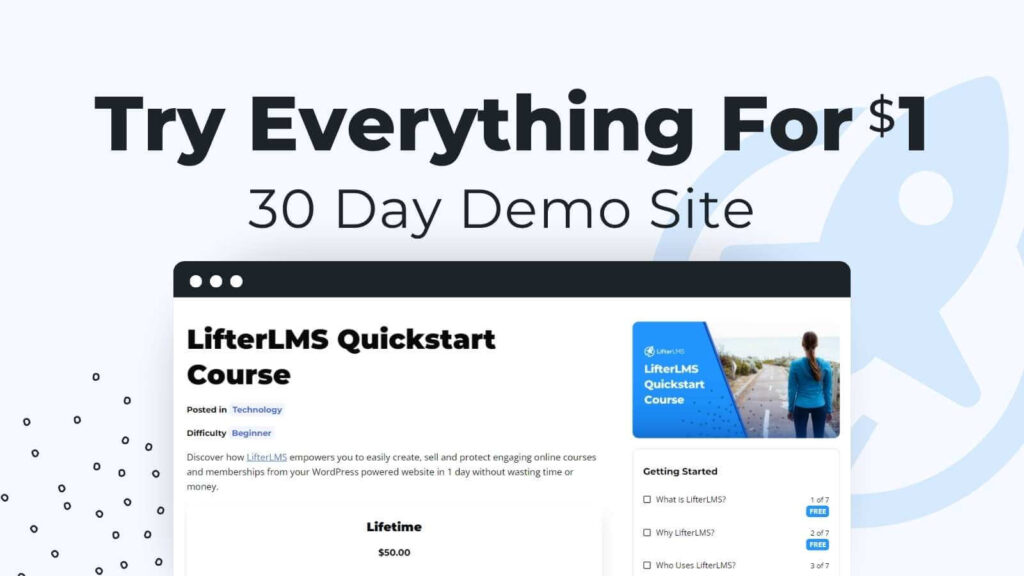This episode is brought to you by Popup Maker
Boost Your Website’s Leads & Sales with Popup Maker
Get started for free or save 15% OFF Popup Maker Premium—the most trusted WordPress popup plugin to grow your email list and increase sales conversions.
In this LMSCast episode, Brad Williams from ThemeSwitcher Pro talks about the motivation for and workings of ThemeSwitcher Pro, a WordPress plugin created by his agency WebDevStudios.
Brad Williams is a seasoned WordPress expert and the co-founder of WebDevStudios, a leading WordPress development agency that has been building high-quality websites for over 17 years. The plugin tackles a frequent difficulty encountered by numerous website proprietors: the shift from traditional, classic WordPress themes to contemporary, block-based themes utilizing the Gutenberg editor.
This sort of upgrade usually meant that the whole site had to be redesigned, which is a lengthy process and incurs considerable expense. Theme Switcher Pro removes that obstacle by enabling the operation of several themes on one WordPress installation.
This allows certain pages or sections of a website to adopt a new block-based theme, while the remainder of the site continues to operate with the existing legacy theme. With this incremental approach, it becomes simpler for teams to adopt new technology, uphold visual consistency through shared headers and footers, and manage budgets with greater flexibility.
2025 WordPress LMS Buyer’s Guide
Exclusive Download! Stop wasting time and money researching online course and membership site tech.
Here’s Where To Go Next…
Get the Course Creator Starter Kit to help you (or your client) create, launch, and scale a high-value online learning website.
Also visit the creators of the LMScast podcast over at LifterLMS, the world’s leading most customizable learning management system software for WordPress. Create courses, coaching programs, online schools, and more with LifterLMS.
Browse more recent episodes of the LMScast podcast here or explore the entire back catalog since 2014.
And be sure to subscribe to get new podcast episodes delivered to your inbox every week.
Episode Transcript
Chris Badgett: You’ve come to the right place if you’re looking to create, launch, and scale a high value online training program. I’m your guide, Chris Badget. I’m the co-founder of lifter LMS, the most powerful learning management system for WordPress. State of the end, I’ve got something special for you. Enjoy the show.This allows certain pages or sections of a website to adopt a new block-based theme, while the remainder of the site continues to operate with the existing legacy theme.
You’ve come to the right place if you’re looking to create, launch, and scale a high value online training program. I’m your guide, Chris Badget. I’m the co-founder of lifter LMS, the most powerful learning management system for WordPress. State of the end, I’ve got something special for you. Enjoy the show.
Hello, and welcome back to another episode of LMS Cast. I’m joined by a special guest. He’s back on the show he was on maybe five years ago or something like that. We’ve got Brad Williams. He’s from Theme Switcher Pro, which you can find on theme switcher.com. He’s also a founder of Web Dev Studios, which is an awesome agency.
The Lifter LMS website was actually designed by web dev studios. They’re an awesome company, but first, welcome to show Brad. Yeah, thanks for having me Chris. It’s funny, I forgot I was on this show. I guess that means it has been a while, so you and Lisa were on. I wonder what number that was.
Brad Williams: You and Lisa were on together. It was a tag team show five years ago. Yeah, that was, it was like the before times, so I don’t, it’s a little fuzzy back then.
Chris Badgett: It was a while ago. I’m back. You’re back and you’ve got a new project theme switcher, which once you told me about that at a conference.
I was like, oh, that’s cool and let me do my high level of why I got excited about it. Yeah. So what theme Switcher Pro does is it allows you to use different WordPress themes on different parts of your website. And in the learning management system space one of the early questions we get from people is should I do a subdomain or not?
And one of the main reasons we advise people to do a subdomain for the LMS is because they already have this massive website. But they really want to use all our tech, including our full site editing theme, sky Pilot, but they can’t get their head around switching, redoing the whole site. So we’re just like, put it on a subdomain.
And there’s other reasons to put it on a subdomain, but this idea that you can, do web design more one piece at a time, in the live environment and maybe you want elementary and Astra over here and you want something else over here. It’s awesome. But tell us the genesis of Yeah.
Theme Switcher Pro and why you guys decided to build it over at web dev studios.
Brad Williams: Yeah. Thanks Chris. So theme Switcher Pro. So at Web Dev Studios, we’re an agency that’s been working with WordPress for, we’re in our 17th year, so we’ve been doing this for a long time focused on the WordPress platform, building WordPress for kind of mid-tier to enterprise level organizations, larger companies, more complex challenges, more content, bigger traffic.
So very experienced in the WordPress face, and we’ve had a number of products over the years, and we still do that really we built some, we just built for fun. Some we felt like were, really important utilities for cu for a WordPress like custom post type UI is our most popular one, which allows anyone to register custom post types through the dashboard, through the ui, WordPress.
Very much a utility. It’s a free plugin that we found out there for a long time. But the genesis of Theme Switcher Pro really came from our clients, right? So we have a lot of clients that are on the, a classic legacy WordPress setup, right? They have a theme that was built a number of years ago, before Gutenberg, before the block editor, or when the block editor was early and new, and, they weren’t comfortable going down that road.
But now the block editor is very refined. It’s a very powerful tool. It’s a great tool. And companies wanna leverage the block editor. The challenge is how do they get from classic legacy WordPress to the block editor? Traditionally it is rebuild the whole website, right? Redesign, rebuild the whole website launch.
What we’ve seen in the past few years is it’s harder to get, budgets approved at a higher, a larger amount. So it’s, so the idea of let’s rebuild our whole website so we can use this new block editor is a very tough sell to executives, up the chain of command. ‘Cause they don’t care, right?
The website looks fine; I don’t care how the content is made.
Content creators. And website admins who truly understand the block editor know the power it offers.
It enables them to efficiently create new pages, landing pages, and other content in a really beautiful way
We started thinking about that. If we can’t get. I Larger budgets approved. Is there some way we can chip away at a transition some way we can iteratively, as you said, replace sections of the website with a new block-based theme while other sections continue to do what they’re doing?
Using the classic setup and that’s where Theme Switcher Pro was born, we started building out this technology for some clients. Started integrating it and using it with some clients and had a lot of success and they were really enjoying how quickly we were able to get them to the point where they could produce block content.
On their production website, which is generally within a month, maybe two months max, they’re already producing content versus a full blown redesign that might take six months, eight months, 12 months before they can start creating block content. So we knew we had something, right? And then we started showing off to some friends in the industry, some hosting company partners, and they said, look, you gotta productize this.
This is a, there’s a need for this. There are so many sites out there stuck on classic, they don’t know how to get to the block editor. And a rebuild is not an option. So theme Switcher Pro we built it into a plugin, and now very easily you can run, multiple themes across a single WordPress install.
So what we’re doing with a lot of our clients is we’re building them a block-based theme. We’re mimicking their header and footer from their classic site, so it looks exactly the same. And then that is, and then we’re styling up all the blocks through theme json and other methods. So that. It all fits their branding it all as part of their website.
And then at that point they can deploy that theme and start using that theme for new content. So if they create a new page, a new post, a new feature section, whatever they use, the new theme, the header footer looks the same, but all the content in between is all block based. So it allows ’em to start really rapidly using patterns, blocks, and all the power of Gutenberg and the block editor.
Again, the rest of their website is locked into that classic state. It’s not gonna touch that. It’s only touching where you tell it’s a switch. So really opens up some, a lot of options, a lot of use case scenarios. We can talk about a lot of different ideas and how we’re seeing people use it. But in my mind it’s a bit of a game changer.
’cause it gives not only website administrators and owners, but also freelancers, agencies, anyone building sites. It gives them a tool in their tool belt that they can go to their client and say, Hey, we have a way we can start to transition you. And it isn’t writing a six figure check. Maybe it’s writing, giving me 5,000 a month for 12 months or something while we slowly integrate this or chip away at it.
This is very much a tool that anybody can use. Freelancers, agencies. We hope and expect that other builders, implementers will wanna take a look at team switchers and see if it’s a good tool for their clients, as well as just website administrators. It gives ’em an option to your point, LMS, if I wanna launch Lifter on my site, traditionally I would have to either switch the theme, to your theme that works really well.
Lifter or update my theme. So it makes sure it works really well with Lifter. Now you could just use your lifter theme just on the MMS sections of your website and everything else stays exactly the same. So products, I think there’s a very interesting angle here for people like you, Chris, where you’re selling a product and our product now can help.
I. You sell more of your product, right? Because it gives them an option to use your theme and have a really nice experience with the LMS without blowing up their entire website. So really excited about it. The feedback’s been great, really enjoying talking to people like you and sharing the story.
’cause this is an educational I. Piece to this so people understand what it does. But I’ve been talking a lot. I just dumped a ton of information there. So that’s where we’re at. It’s exciting.
Chris Badgett: Yeah that’s fantastic. And I’ve the best products, in my opinion, like the customers pull it out of you.
And I’ve literally had that question probably a hundred times in 10 years. Hey, can I use two themes on my website? And I’m like, no, you can’t use a subdomain or use creative or whatever. Multi-site was always an option too. And that’s, and we love multi-site. A lot of our clients use multi-site, so this is not to replace multi-site.
Brad Williams: There are definitely a lot of great use cases for multi-site LMS even is a good use case where maybe the second site in the network, slash LMS is your, is lifter. But not every site necessarily needs that. So this gives them some options. They don’t have to go the multi-site route, but they can still get lifter in its own containerized section of your site running, your theme.
So yeah it’s pretty cool when you start to think about the possibilities of what you could do with this.
Chris Badgett: And for the agencies, like you’re saying. I’m always a big fan of in service work, agency, work, the land and expand. If I’m hitting you with this giant project, it’s harder to sell that, but if you’re like, let’s just get started and incrementally improve, focus on priorities.
Yeah. One at a time. Like it, it totally makes sense. The agencies are gonna love this. It’s gonna help ’em sell.
Brad Williams: Yeah. I mean it’s, I like to, I always tell our clients, and especially new leads we’re working with I want to, we want to bring, show you the value as quickly as possible, that you’ve picked the right agency, you’re working with the right people, and we are moving the needle.
With your, initiatives online as quickly as we can. You made the right choice. The higher ups are seeing movement, they’re seeing things happening. This helps with that, right? Like I said, do you want to go through a six or eight month redesign, rebuild when all they really want to, they like their site.
They like the overall look and feel, but they hate the editor and they have struggle making good content. It’s a perfect use case for that. Let’s chip away at it. We have a client that’s using it just for landing pages. They don’t wanna swap out their theme, so they don’t plan to remove this over time.
They plan to leave it there forever, and they’re using it within two weeks. They were producing really powerful landing pages. And once you make one and the pa, the power of patterns, you make that landing page pattern. Then within a couple clicks, you’ve just drafted a new landing page. And then you can swap out content, click tracking scripts, whatever.
But very quick they’re launching landing pages within a matter of hours now and before it took weeks because they had to have developers come in and say, okay, I got all the content, but now we need you to tighten it up with CSS, get the alignment right on these images. Make it look good.
’cause it’s really hard to do that in the WY wig editor, the classic editor, just putting two images side by side. Is what feels like an impossible task unless you know how to code and the old editor. But in Gutenberg, it literally is a couple clicks put in a container. Two columns boom, two images, and you’re done.
Once you really buy into it and really experience it, and especially see it, it’s certainly on the patterns. I feel like you see this light bulb moment when people see how powerful patterns are and how quickly they can reuse those patterns throughout their website. You just see their eyes get really wide and it’s a game changer.
So the more people we can get on Gutenberg, the more people we can get building blocks and utilizing those. The power patterns, the less people are gonna be looking for alternatives to WordPress. If they’re still stuck on classic editor, probably are very frustrated with WordPress. it’s WordPress’s fault?
Tools that we’ve spent years building within the open source community.The better for the project and hopefully this is a tool that, that people can use to, to do just that.
Chris Badgett: Let’s talk more about use cases. You mentioned the the marketer who wants to do some campaigns and landing pages. Maybe somebody wants to just redo only the homepage and start there.
Where do you see people and what would you advise agencies and brainstorm with them about where are the most high value places in the WordPress site that I could focus on first with. Block-based theme.
Brad Williams: Yeah, it’s a great question. I think it always is gonna pin on the business and what’s, their business and what’s important to them on their website.
The big question I would say to ask is, do we want to start with a very impactful I. Section of the website, like the homepage or maybe the single article page. If you’re a media site that just gets a ton of traffic. Or do you wanna start somewhere that’s a little less impactful? Maybe your about page, maybe your FAQ something that is important but not, not the most important thing on your website.
That’s the number one question we like to ask. And generally speaking, the answer is they wanted to go with the more impactful. Which is surprising, right? I feel like most people would wanna dip their toe in a little bit. They’re like, Nope, let’s replace the homepage. Great, let’s do that. So we had a client we worked on where 95% of their traffic goes right to the single articles.
It’s a media site. People, it’s very discoverable on search engines, very shareable on social. So mo all their traffic goes to their articles, their homepage is a sliver of their traffic. So guess what? We replaced a single article page. That’s the first page we did. And then we let it ride for a while just to let the dust settle.
But not only did it work well it’s now they’re able to produce with blocks. It’s really given their content creators a lot more power in what they’re doing. But, it’s also really increased the performance of the website. ’cause in, I haven’t even touched on this, but as blocks and the way blocks work and the way it’s built are just way more performant than classic WordPress.
Immediately their core web vitals and their page speed insight scores, got much, much better and got all the way up into the green, which for a site that had a ton of ads and legacy is very hard to get to. Ads are the really, the challenge there. But very quickly, not only we’re seeing better traffic, people stay on the site longer, but also it’s just way more performance, so it’s taking less resources off the server.
Or using less resources through the server. So it just has this kind of domino effect of good things when you start rolling out blocks. Again, it’s different ways you can chip away at it. We also had another, right after we did that, we went in, started working on the homepage, but obviously the single article was the most important for them, right?
So it’s questions you wanna ask your clients. What’s the most important section of your website? If you’re selling products, your product pages are gonna be the most important, right? If it’s a service, it’s gonna be your features, your services pages, your pricing pages, people, what they’re reading to determine if they wanna make, make that purchase.
So you wanna think about that, but honestly, people like to see results. I. Companies, clients like to see results. So honestly push for the more impactful push to replace their homepage because you know how much better it’s gonna be when you get into blocks and patterns. And hell, you don’t even have to build your own theme, right?
All the demos I’m putting down on YouTube, I’m using Ollie, I’m using Astra. I’m using these really powerful free themes out.org. And they have premium versions, but the free themes are really good to start producing pages. So you could say, you know what? You could download our plugin. Download free Ali.
Activate on your site and within literally 60 seconds start producing block-based content on your legacy website using Ali or Astra or whatever you want. It’s a huge game changer. And I think it’s just understanding how flexible it is that it gives not only the users agencies, freelance, but also website owners, a lot of options and how they wanna use it
Chris Badgett: for the technical people out there.
How does it at a high level work? Because I went, I remember when you reached out to me to test, I’m like, we’ll see, let me see how this works. And lifter LMS is complex, like WooCommerce is a platform. There’s all these custom post types and everything, and I just turned it on and all the settings for lifter components at a global level showed up.
Brad Williams: Yeah.
Chris Badgett: And I like how on individual pages you can make a specific decision and everything, but it just worked. Like, how does this thing technically work?
Brad Williams: It’s magic. It’s all pie in the sky. There’s fairies and pixie dust and no, it’s it is very technical because I think on the surface it’s okay, you’re probably just running a function or two on the back end to say, run this theme instead.
That theme. Way more technical than that. And what it really gets done to it when you load Gutenberg. Imagine I’m on a classic WordPress site. I want to use Ollie, right? So as soon as I flip a page over or whatever over to Ollie, not only does Ollie have to power the front end, Ollie has to fully load in the backend and the block editor because all the patterns have to be loaded in all the styles.
Everything that Ollie gives you, all that has to be loaded into the editor. Which I don’t think a lot of people realize, right? They think, oh, it’s just blank. Gutenberg, there’s nothing. It had to load all the theme assets as soon as you go create, add new page or add new posts, or add new whatever. That was the large technical challenge because even in the way that WordPress loads themes, it’s not early enough.
I. To, to bring in all that stuff and just switch it. It’s too late in the load process. I’m not the right person to get all the technicalities of it, but I can promise you not only have we built this in a way that just works, like you said, but it’s massively performant. The site I mentioned that does single article page, that’s a WordPress VIP site.
This is running on WordPress, VIP, and that site gets a significant amount of traffic. This has really been tested at scale. With our clients, which gives us a lot of confidence that if it works at that level, at the really kind of enterprise, big media level, it will work for 99.9, the PE percent of the people out there running WordPress, right?
‘Cause performance was such a big thing for us, we can’t roll out a tool and recommend it to our clients if it’s gonna be a massive performance hit or really any performance hit. Like it can’t. You can’t do that. Performance is so important on the web. The site has to be fast or you’re gonna drop search engine ranking.
People are gonna bounce quickly on your site ’cause it’s slow loading. We don’t have attention spans online. I want what I want right now. So we prioritize performance at the forefront of everything to make sure is lightning fast. And of course you always need good caching layers and all that stuff, but it’s built to perform so.
It does work really well. It uses all core WordPress. If you have custom post types registered, they’re automatically gonna show up on the dashboard and you can say, yep, I have my movies section. I wanna replace movies with this other theme. Ollie, it’ll start Every, every movie page will start running Ollie.
Also, since we’re talking the technical side, the one thing I do wanna mention too is, this is really built by developers for developers. So there is an admin ui that allows you to do certain things, but it’s also fully controlled through code. So you can write, we have all sorts of hooks and filters.
And you can type, you can tap into almost any WordPress conditional and do a theme switching. Case conditional. So you could say, Hey, if user Brad logs in, we’re gonna run the brad theme. Or if it’s after 5:00 PM local time, we’re gonna run the evening theme. So like you can just imagine how crazy and flexible this could be, and being able to control it by code is gonna, is really gonna be a requirement, especially at the higher level development, because everything needs to go through.
A code repository. There needs to be accountability around what’s happening, where the code’s committed. You don’t want to a client that doesn’t really understand what they’re doing to go in there and start checking features and saving it and, all of a sudden your theme switch and you didn’t realize what was happening.
So you can control this whole thing by code which is what I would expect most developers would probably want to do.
Chris Badgett: Very cool. I. Tell us about the like page builders. As an example, elementary’s really popular. I think probably 30% of lifter LMS users use Elementor. They’re on the, either using elementary’s, hello theme or something like ASRA or Cadence or something underneath it.
Page builders are plugins, so how should people think about it if they’re, full site editing. Curious, but they’re really wrapped into this page building world.
Brad Williams: Yeah. It does fully work with page builders, so we wanna make sure again, a number of the clients that we’ve worked as, or we’re in process of transitioning are on page builders.
Elementor generally the one we see the most. So we wanna make sure it works with all the. Top page builders, Elementor Divvy, beaver Builder cadence those type of those type of builders. But it works, right? So if your whole site’s built with Elementor, you can still go in there and say, all right, I wanna switch my homepage to Astra, or I wanna switch my single post template to.
And then when you hit those pages, it just essentially, it no longer is gonna run Elementor ’cause of the theme switching layer. It knows, hey, we’re switching off Elementor over to this. And so it’ll load all those Ollie assets or ASRA assets instead of Elementor. So you can absolutely use this with those.
And many of the clients we’re recommending to our on page builders ’cause. Look, page builders are great. There’s definitely a there is a market for page builders are a good fit for a lot of people. But what we’re seeing is a lot of companies, marketing companies, agencies, people that don’t really specialize on WordPress, but they build sites right.
Leaning almost too heavily on page builders. So we’re, there’s a lot of clients walk in the door that have this massively complex website. That was built in Elementor and it’s I, it was a wrong decision, right? A really complex website like that in my mind, should not be built using a page builder.
It just gets too hairy and too complicated. So we’ve unpacking that using Stream steam switcher to get ’em back to the block editor, remove that extra layer of complexity, right? Especially we talked for performance. Page builders, they add that, that really strong layer of complexity.
And then all those decisions you’re making on designs and layouts, that’s all stored in your database, right? So it has to be retrieved on page load. Of course it can be cash, but it’s just extra overhead that’s happening to load that page. You can get rid of all that. You can get rid of that and just go with Gutenberg.
No extra page load. It’s what’s already loading. So again it’s an option. People are on page builders and looking to transition or to use it as a a tool alongside your page builder. Like I mentioned, this isn’t a tool that you have to have a plan to remove. I. Certainly if your plan is to transition to a block theme over time, once you actually transition every section of your website, you could remove the plugin and just activate your new theme, and you’re done, right?
The plugin’s gone, and your new theme is fully active, your new block theme, or it could just be a secondary tool that you plan to use forever, right? You keep it on your website. You have your site built with Elementor, which is great, but you wanna launch an lms, right? You wanna launch Lifter? And you know what, I don’t wanna figure out how to do that in Elementor, so I wanna use your theme, Chris.
So boom slash lms and all those pages can all be, on your theme. So again, a lot of tools a lot of options, a lot of use cases, but page builders are a big part of it. ’cause there’s they’re so dominant, there’s so many sites running. Page builders wanna make sure that this fully supports them.
And it’s a tool that people could use if they’re on, if they’re using one. We talked a little bit about patterns and full site editing. I’m not a engineer, and once I realized the power of Gutenberg with, like you said, building landing page pattern template, I could reuse and. Like the copying.
Chris Badgett: This episode of LMS Cas is brought to you by Popup Maker, the most powerful, trusted popup solution for WordPress. Whether you’re selling online courses or memberships, popup maker helps you grow your email list, boost sales conversions, and engage your visitors with highly customizable popups. Imagine creating custom opt-ins, announcements and promotions that actually convert.
I personally use pop-up maker on my lifter LMS websites for lead magnet opt-ins, card abandonment, upsells, downsells, and guiding users to helpful content. Popup Maker is an essential tool for growing my email list and making more money online through my website. Ready to take your website to the next level?
Head on over to wp popup maker.com/lmscast and save 15% on your order. Discount automatically applies when you visit through that link. Popup Maker also has an awesome free version.
So you can just use that as well. Go to wp popup maker.com/lmscast and save 15% off your order or get started with the free version. Now. Get more leads and sales on your website with popup Maker today. Now back to the episode.
I can go to a part of my site and just copy a group of stuff or a whole page and just paste it somewhere else. Yeah. It’s so cool. I remember the old world where everything was like, all right, contact a developer. We got need a custom template. It’s not very flexible. Yeah. I couldn’t go make changes to the template when I found some kind of upgrade or something.
That’s what really sold me on full site editing, but what else do you love about it?
Brad Williams: Yeah, and just to be clear, there’s and people listening probably know the distinction between it, but you have the block editor, which is Gutenberg, the block editor. That’s your content area, right? And then full site editing is essentially expanding that.
So you can use that editor throughout your whole site layout, header, footer, sidebars, whatever. You can use essentially blocks. To build out your site. To be clear, right now, theme Switcher Pro does not support full site editing fully. We baked in some support, but started going down a few rabbit holes, and since it’s still evolving, we’re like, let’s just focus on the block editor.
At least for the launch, it’s definitely on the roadmap as things evolve and that feature gets more tightened up. But I do see there is a use case, right? ’cause it’s the idea of a page builder, but built right into WordPress core. It still has a ways to go, I don’t know if you’ve used it on any of your production websites, like full site editing.
In fact, theme switcher.com is a full FSE enabled theme that we built. It’s, it works. It’s okay. I think it has a little ways to go. I really struggled with the menu and just adding things to the menu was a bit challenging, which was surprising. I see the direction they’re going, but it, it feels Gutenberg back when it was like the first couple releases, right?
Kind of works, but definitely needs polished. And that’s waiting for more of that polish before we bake in that full support for the full site editor.
Chris Badgett: What those studios you mentioned like you help Medium to like enterprise and you’ve got some big brands on your site, like the NBA Campbell Soup, Starbucks.
Microsoft. Tell us. What’s a really big site? Like how many pages? Because just this problem of hey, if you land a big client, it’s hard to convince ’em to do the whole thing all at once. Yeah. And this is where a theme switcher comes in, but how big are some of these sites you’ve worked on?
Brad Williams: There are millions and millions of pieces of content. Now, to be fair on the theme switcher side, it hasn’t been at the that extreme level. These media sites we’re talking, tens of thousands of posts articles if not more. They’re producing 5, 10, 15 unique articles a day.
They have editorial teams that are writing. And that’s some of the sites we’ve integrated it with.
But in terms of just sheer size. We’ve worked on some massive things and WordPress can scale and basically do anything. I remember one of the largest projects we ever did. You mentioned Microsoft was the old MSDN developer network, if you remember.
It was really important 20 years ago ’cause it was just, it was a, it was essentially a blog network of Microsoft employees, but they were sharing a lot of information that helped a lot of us learn how to do things back in the day. Especially when T Net was new and, things like that.
So we helped them migrate from this proprietary platform over to WordPress, multi-site network, and they were, I think 90 or 95,000 when we were done sites in the network, blogs in the network for the whole MSDN. And it was, tens of millions of. Articles and content that we had to migrate into WordPress into multi-site.
It was a massive migration, as you can imagine. And it took days to even run. At scale we’ve done a lot. WordPress can do it. We’ve seen a lot of sites out there that are, just running massive amounts of traffic. And it works, it works well.
Chris Badgett: I gotta ask you the number one question for the agencies and the site builders out there.
How do you get those medium and even big enterprise clients? Let’s say there’s an agency and they’re wanting to. Move outside a small business a little bit and get a little bit bigger client, what advice would you have for them to try to develop those clients?
Brad Williams: Yeah, it’s a good question.
And honestly I think it’s certainly luck as part of it. We landed our first kind of, well-known client name years ago on a flight to Word Camp San Francisco, sitting next to a lady that was flying out to find developers. It was Time Magazine, so it was like our first real big brand.
And it, opened a door, gave us the opportunity and we landed it. And then once you get one it certainly becomes a little easier. ’cause you can have the logo. You can say, yeah, we did this for time, we can do this for you. But I think, aside from that I think a lot of it is projecting that you work on those type of clients, making sure your website aligns with that.
Like you hit our website and you can tell there’s some big brands on there that are recognizable. So it gives you a sense of the type of projects, the size of projects, although you’d be surprised people reach out. Have a very small budget. And I’m like, what about our logo?
These logos gave you that idea. But you wanna project that. If you’re talking to a big brand and they go look at their website, what are they gonna think? Are they gonna say this looks pretty amateur, or are they gonna think, yeah, this looks like this looks legit. Who we wanna work with?
They do good work. And just put yourself out there I, when Web Dev first started, nobody knew who we were. And we were just da getting into WordPress and we started getting involved in the community and contributing to open source. And that led to some speaking opportunities at Word Camps in there, just getting started and very quickly we grew our name for ourselves just by this kind of gorilla marketing of showing up.
Contributing. And next thing you know, our name was out there a lot. We’re speaking a lot of events and then more and more things started to show up. There’s not as many events these days, but I think even doing what you’re doing right here, Chris, this is getting yourself out there, getting me out there, getting your guests on the show out there.
So even just getting on people’s podcast, talking shop, making people aware that, what you’re talking about is helpful. So it’s, there’s no right answer, but I think one, making sure you’re presenting that you are that type of company that works with larger brands and you have those capabilities and someone, it doesn’t mean you have to have a staff of a hundred people, but project that on your website that you have not a staff of a hundred people, but you have a very solid company, work with larger.
Companies, you have support, you have what they need. And then, things will happen at this, there’s a lot of opportunities ’cause it’s right now, people are looking to save money. Even large corporations, they’re not spending what they were a year ago. So there’s good opportunities for people to come in and make some, makes some things happen.
A potentially a lower price point that gives them that opportunity that maybe they wouldn’t have had a year or two ago.
Chris Badgett: You have some insight into that, who WordPress is for, and where it fits?
I know this is a big question and you could do a whole talk on it. Whether it’s a small business, a medium-sized business, or even an enterprise, there are so many site-building solutions like Webflow and others. When does WordPress really stand out as the perfect fit for a client? Yeah.
Brad Williams: That’s the big question, right? I think that is, and that is one of the challenges of WordPress because we’re trying to be everything to everybody, and it’s no different than running an agency and saying, we do WordPress work. What type of projects? Whatever. That could be anything. It could be a $500 blog or a $500 million, website. It’s a tough question, man. ’cause it is so flexible, it can be used for everything.
So how do you focus in on what that means? I’ve always really gone to the fact that I feel like WordPress, one of the reasons WordPress has gotten so popular over the years is it’s intuitive. It’s, and it’s, there’s been a lot of focus on the ui, ux doesn’t mean there’s not more we can do, certainly, but if you just log someone into a WordPress website that’s never seen it before and say, see if you can figure out how to publish a post.
They’ll probably be able to figure out how to publish a post. It may not look great. It may just be the title and they don’t realize they need to add blocks, but they’ll probably figure out how to add the title and hit publish, right? So I feel like the intuitiveness of it has always really helped.
So I think, people looking for a system that’s, easy to use, obviously has a huge ecosystem. That’s another big, huge benefit to WordPress is the ecosystem, the products that are out there, the services, how long it’s been around, big teams behind these products or teams that you know, you can trust and support.
Intuitiveness, flexibility, ui, ux stuff, and just the ease of content. Like as long as WordPress doesn’t lose focus of its core, which is creating content, it’s content management system, it’s all about the content, then I think we’ll be okay. We’re never gonna dominate, we’re never gonna be a hundred percent usage.
We’re never gonna be, everyone’s oh no, it’s shrinking. I’m like, it’s not shrinking. It’s plateaued a bit in the last year. That’s true. But 43% even is pretty good. The end of the world. Yeah. 43.5% right now. That’s it. It’s an insane number. That’s hard to wrap your head around, like that’s a lot of sites.
A lot of sites, and that’s just the known internet, right? Forget all the local installs and all the things that people doing behind firewalls that block, tracking and. So it’s just a staggering number. So I think people may remember that even if it goes down a percent or two, it’s a staggering number, but yeah it’s a tough question.
I think it’s more about showcasing what it can do in different verticals, different angles. There’s talk about, rebranding WordPress or getting some marketing held, blah, blah, blah, like WordPress for e-commerce, WordPress for publishers, WordPress for small business, like really having these focused landing pages, sections that explain why WordPress is good for a small business, right?
Why it’s. Easy. It’s generally the costs are gonna be cheaper once you get set up, ongoing things like that. So just, there’s so many niches and verticals it’s great for, but the message of it’s everything to everybody is not a good message. It needs to be more focused. In some areas, so I don’t have good answers there.
I’m sure there’s smarter people out there, hopefully can figure it out, but it’s a challenge with any business. I always dealt with people like, oh, I want to get Should, should I get start building websites with WordPress? A lot of people say no, it’s too saturated. I’m like, do it, but just try to find a niche.
It’ll make it easier to market. Like maybe it’s Woo Commerce, maybe it’s lifter like find a niche and that way your marketing is so targeted on not just WordPress, but WordPress and you’re gonna start to stand out. You’re gonna start to stand out from the pack. Versus me. Our challenge is we do WordPress, right?
It’s not, and it’s like we do WordPress, so that makes it, that makes our marketing harder, which is why we get people to walk in the door with the $500 budget and a $500,000 budget. ’cause it’s tough to us to market just to that higher level.
Chris Badgett: In terms of the kind of land and expand approach, which theme Switcher Pro really helps with?
What advice do you have for somebody to develop a client relationship and keep it going? Like when I worked with web dev studios. It was professional all the way through, through the sales process, the communication, the weekly calls. Yeah, the scheduling, the team that came for different parts. It was like super professional.
Brad Williams: Thanks Chris. And if
Chris Badgett: I had unlimited budget, I would just keep going. And, how do you do that? What’s some of the pro tips you have for land and expand and good? Yeah. Land expand is
Brad Williams: a good way to describe it. And that’s really our goal, right? And we tell clients, I, I get very honest when I say clients leads walk in the door, I get very honest with them.
Look, we’re I. We’re all about partnerships and relationships. Yes, we wanna rebuild your website. Yes, we wanna help you with your online goals, but we also wanna be there for the long haul. And I always, I really appreciate my team. If we can help our clients be successful, if they’re successful, we will inherently be successful because why would they go anywhere else?
If we’re helping them succeed online, if we’re helping, increase their sales or their conversion or their bounce rates are getting better whatever their goals are, if we’re helping them meet or exceed those goals, they’re never gonna go anywhere else, right? That’s always our goal is if we’re doing a website rebuild, we want to rebuild a site, but then we also want to be an ongoing partnership.
So we’ll set up something like an ongoing retainer, a monthly retainer, maybe we have set number of hours every month that we’re dedicated to them and then we can schedule it out. And then we just work through their initiatives. I always like to also preach that we’re not task takers, we’re gonna bring our recommendations and we want to, I say, let’s sit at the table.
The client knows their business inside and out. We know word pressing the web inside and out. We all sit at the same table together. We’re gonna make the best decisions for your online goals and initiatives, right? And then we can help execute on those. So always be thinking, yes, there’s gonna be that initial project.
It might be a build, it might just be some one-off tasks they need help with. But you always wanna be thinking, how do I establish a, an a longer ongoing relationship? ’cause to be very honest, getting more retainers and recurrent revenue really helped us, especially through, the past four or five years with the uncertainty and the ups and downs and, lockdown all of that when new projects weren’t always walking the door.
We still had our monthly retainers that were keeping us going, like keeping us busy. We’re still doing that stuff. So think about that. ’cause it is, you don’t wanna just be a one and done, you jump to the next one. You wanna cultivate relationships, build those relationships, and over time you start to build a kind of a Rolodex of clients you’ve had for years that are giving you, bringing in money month in a month out, right?
And that’s how you really start to grow and to really, solid and viable business in this space. I think
Chris Badgett: one of the key things you said is we’re gonna make recommendations, like what are some examples of like proactive recommendations that lead to more work?
Brad Williams: A lot of it’s around performance.
Think about things that clients care about, right? And it’s ranking search engines, which is directly related to performance in a big way. That’s a huge one for us. We’re always running page speed insight tests. We’re always running speed tests and looking for opportunities that we can go to the client and say, Hey.
You just uploaded an image that’s 10 megs. We need to, let’s, we could either convert that for you, or better yet, let’s integrate a system that does that automatically, right? You upload whatever image you want and it will make a nice web p format for you. Those type of opportunities, you can always bring a client and you really will stand out as you’ll look like a thought leader.
’cause you are, you’re being proactive, right? Look at things like security, every client we engage with, I go through a checklist and we handed them and say, Hey. Here’s the things we could do to help enhance your security. Two factor authentication. We’re happy to integrate that. Maybe a single sign on, strong password policies, whatever that is.
Most sites are not doing any of that, right? That’s some quick wins. You can, and they’re thinking, oh, he’s, they’re really thinking about security. That’s great. Like you wanna be proactive and thinking about the things they’re not thinking about. But supports the goals that they are thinking about, right?
So performance and speed are gonna help them rank better, and search engines are gonna help people stay on the website longer. That’s a goal for them, right? So get that site as fast as you can. You need to be perfect if you can on core web vitals or as close as you can. Security is another one.
Accessibility is another one. It’s not only important, it’s the right thing to do. Like I preach this to my team and our clients like. We make the web as accessible as we can. I don’t care if it’s a client requirement, we’re making it accessible, and the only time we won’t is if it’s literally a client is telling us it has to be this color scheme.
We inform them that is whatever, it doesn’t pass the test. And then we would do it if they, tell us to. But generally speaking, the clients wanna be accessible too, because it could open ’em up to legal situations, right? Yes, it, generally speaking, they want. Accessible web, but what’s their goal not to get sued, right?
So let’s make your website accessible. Let’s integrate things that can help automate that. AI is a great use case for automating alt texts, the things that people just never do or forget to do. Automate it. If there’s a 15 check step checklist to publish something, they’re never gonna do all 15 unless it’s required.
How can you make that three or four things and then all those other things are automated, right? Oh, I upload an image. I forgot to fill in the alt text. AI fills in, Hey, it’s a picture of a dog on a park bench. Boom. That’s perfect. It’s accessible. It’s what it needs to say. So look for those opportunities that you can bring.
’cause those are the biggie. Speed, performance, security, accessibility. Those are some big ones that there’s almost always things you can do there. Look for new versions of WordPress. 6.8 just came out great opportunity to sit down. What new features should my clients care about in this fe in this release?
There is that pre-loading of pages and content stuff that’s interesting, right? From a performance standpoint. So that’s something you wanna research. Always look at new versions and say, what can my clients choose that are in here? And then you come to ’em and say, Hey, new versions out. Lemme walk through some features.
I think you’ll care about. Now you’re a partner. Now it’s not just client agency, you’re a partner. You’re thinking about them, you’re thinking about their success, and that stuff goes a long way towards building those relationships and getting them to trust that you’re trying to help you’re helping them make the best decisions for their online goals.
Some of the, and I’ll end it on this point, but some of the hardest challenge, toughest clients are the ones that don’t go with your. Recommendations. And I’m not saying they should always just blindly say yes to everything we recommend. But if it’s constant pushback and they hired you ’cause you’re the expert, but they’re constantly pushing back on what you’re recommending, that’s a big red flag that you might want to take a step back and say, wait a minute.
I’m like, why you hired me? I’m the expert, but you were literally doing everything I tell you, you should not be doing, it’s not gonna end well for either side. They’re not gonna be happy with the results ’cause they’re not listening to you. And you’re not gonna be happy ’cause you’re gonna feel like you’re getting blamed for things that shouldn’t be your fault, right?
So look out for that. But generally speaking, most people do want, they want your advice, they want your help. They hired you for a reason. Sometimes it’s good to remind yourself that they hired you ’cause you’re the expert. So show ’em that.
Chris Badgett: So that’s Brad Williams from Web Dev Studios. Go check out web dev studios.com, put theme Switcher Pro in your toolkit.
It’s awesome. We’re gonna be doing some content at Lifter on how to use it and why to use it and where to use it and all that. That’s at theme switcher.com. Any anywhere else for people to go or connect with you? Brad?
Brad Williams: Yeah, I’m on all the socials, Twitter and Blue Sky at Williams ba or Blue Sky and Brad Williams just search me.
I like linked my domain. It’s not really easy to say. And then we’ve putting out some cool YouTube videos too. So if you search web dev studios on YouTube, we’ve got a couple of teams switcher videos. I’ve tweeted them, they’re on socials too. But within a couple minutes you can see this in action.
We got, examples of from block to block theme, we got example and a one I just posted of classic editor to block and just click in that save draft button. Classic editor and seeing the whole thing flip. It is just like a whoa, this is cool moment. But do reach out if you have any questions, any thoughts?
It’s new, so really trying to get feedback. I’m doing a demo with an agency owner right after this. If anybody would like a demo or just have questions, whatever, feel free to reach out to [email protected]. But yeah, I really appreciate it, Chris. I’ve always enjoyed our friendship, our partnership you putting your trust in our company to, to help your company.
And I think this is just the next evolution of us helping each other through our products. Super excited to get this out there and really excited to know this is one that, that I know your clients are gonna be very interested in. So thanks for having me.
Chris Badgett: Awesome, Brad. Thanks for coming on and we’ll have to do it again sometime.
And that’s a wrap for this episode of LMScast. Did you enjoy that episode? Tell your friends and be sure to subscribe so you don’t miss the next episode. And I’ve got a gift for you [email protected] slash gift. Go to lifter lms.com/gift. Keep learning. Keep taking action, and I’ll see you. In the next episode.
2025 WordPress LMS Buyer’s Guide
Exclusive Download! Stop wasting time and money researching online course and membership site tech.

